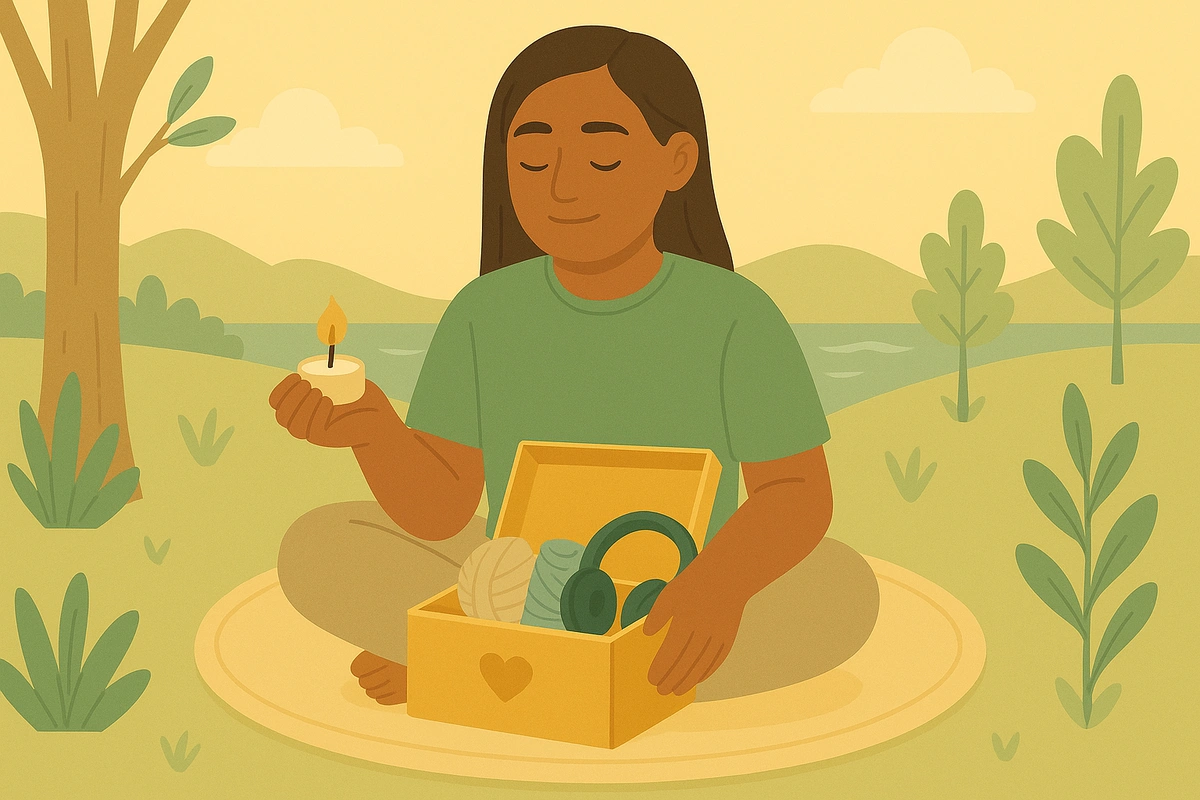A sensory comfort box offers a powerful pathway to emotional stability by creating a personalized collection of sensory items that engage your nervous system's natural calming mechanisms, providing immediate relief during moments of anxiety, stress, or emotional overwhelm.

Creating a sensory comfort box harnesses the power of your five senses to interrupt the body's stress response and activate your parasympathetic nervous system. This evidence-based technique works by redirecting your brain's attention away from overwhelming thoughts and emotions toward immediate, tangible sensations that ground you in the present moment.
Think of your nervous system like a fire alarm that sometimes goes off when there's no real danger. Your sensory comfort box acts like a reset button, sending calming signals through multiple sensory pathways to tell your brain "you're safe now." This multi-sensory approach is particularly effective because engaging different senses simultaneously can interrupt anxious thought patterns and provide faster relief than single-sense techniques alone.
Sensory comfort boxes work by engaging your body's natural regulation mechanisms through multiple sensory pathways simultaneously. When you're anxious or overwhelmed, your sympathetic nervous system activates the fight-or-flight response, flooding your body with stress hormones and creating physical symptoms like rapid heartbeat, shallow breathing, and muscle tension.
Grounding techniques that engage the senses help activate your parasympathetic nervous system - think of it as your body's natural brake pedal that slows down the stress response. This happens because sensory input travels directly to brain regions involved in emotional regulation, bypassing the thinking parts of your brain that might be stuck in anxious loops.
Your brain processes sensory information in a way that connects directly to emotional and memory centers. When you engage multiple senses with comforting stimuli, you're essentially giving your nervous system evidence that you're currently safe. This multi-sensory approach is more effective than single-sense techniques because it creates multiple pathways for calm signals to reach your brain.
The technique works particularly well because it shifts your attention from internal anxious thoughts to external, present-moment sensations. This redirection interrupts rumination and catastrophic thinking patterns that often fuel anxiety. Your brain can only focus on a limited amount of information at once, so filling that space with intentional, comforting sensory input crowds out distressing thoughts.
Research shows that progressive sensory techniques can effectively reduce stress, anxiety, and depression. The act of deliberately choosing to engage with your comfort box also provides a sense of control and agency during moments when anxiety might make you feel powerless.
"I feel silly using sensory items as an adult": Remember that engaging your senses for emotional regulation is a scientifically-backed technique used by therapists worldwide. Your nervous system doesn't distinguish between "adult" and "child" comfort - it responds to effective sensory input regardless of age.
"My comfort box isn't working during panic attacks": Panic involves intense physiological arousal that may require modified techniques. Try engaging with items before anxiety peaks, use stronger sensory input (like ice cubes or strong scents), or combine sensory grounding with deep breathing techniques.
"I don't know which sensory items to choose": Start with one item per sense and experiment. Notice which textures, scents, or sounds naturally appeal to you in daily life. Ask friends or family what sensory experiences they find comforting, or visit stores to test different textures and scents.
"People make comments about my comfort box": You don't need to justify your self-care tools to others. You can simply say "these help me manage stress" or keep your collection private. Remember that many people use less obvious comfort items like smartphones or food for emotional regulation.
"I forget to use my comfort box when distressed": This is common when anxiety narrows your thinking. Place visual reminders near where you typically experience stress, practice using items when calm so they become automatic, or ask trusted friends to remind you of this coping tool.
"Some items stop working over time": Your nervous system can habituate to sensory input, so refresh your collection regularly. Rotate items seasonally, add new textures or scents, or modify existing items (like changing essential oil blends).
"I feel worse after using certain items": Some sensory input can be triggering, especially for trauma survivors. Remove any items that cause distress and focus on clearly comforting sensations. Consider working with a therapist to understand and address sensory triggers.
"My box is too bulky to carry everywhere": Create multiple smaller collections for different locations rather than one large box. Consider which senses are most calming for you and prioritize items for those senses in portable versions.